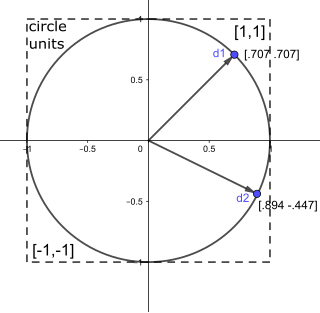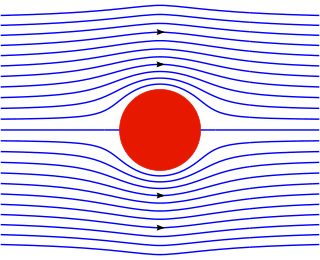Scalar triple product

The scalar triple product (also called the mixed product, box product, or triple scalar product) is defined as the dot product of one of the vectors with the cross product of the other two.
Geometric interpretation
Geometrically, the scalar triple product
is the (signed) volume of the parallelepiped defined by the three vectors given.
Properties
- The scalar triple product is unchanged under a circular shift of its three operands (a, b, c):
- Swapping the positions of the operators without re-ordering the operands leaves the triple product unchanged. This follows from the preceding property and the commutative property of the dot product:
- Swapping any two of the three operands negates the triple product. This follows from the circular-shift property and the anticommutativity of the cross product:
- The scalar triple product can also be understood as the determinant of the 3×3 matrix that has the three vectors either as its rows or its columns (a matrix has the same determinant as its transpose):
- If the scalar triple product is equal to zero, then the three vectors a, b, and c are coplanar, since the parallelepiped defined by them would be flat and have no volume.
- If any two vectors in the scalar triple product are equal, then its value is zero:
- Also:
- The simple product of two triple products (or the square of a triple product), may be expanded in terms of dot products: [1] This restates in vector notation that the product of the determinants of two 3×3 matrices equals the determinant of their matrix product. As a special case, the square of a triple product is a Gram determinant.
- The ratio of the triple product and the product of the three vector norms is known as a polar sine:which ranges between −1 and 1.
Scalar or pseudoscalar
Although the scalar triple product gives the volume of the parallelepiped, it is the signed volume, the sign depending on the orientation of the frame or the parity of the permutation of the vectors. This means the product is negated if the orientation is reversed, for example by a parity transformation, and so is more properly described as a pseudoscalar if the orientation can change.
This also relates to the handedness of the cross product; the cross product transforms as a pseudovector under parity transformations and so is properly described as a pseudovector. The dot product of two vectors is a scalar but the dot product of a pseudovector and a vector is a pseudoscalar, so the scalar triple product (of vectors) must be pseudoscalar-valued.
If T is a proper rotation then
but if T is an improper rotation then
Scalar or scalar density
Strictly speaking, a scalar does not change at all under a coordinate transformation. (For example, the factor of 2 used for doubling a vector does not change if the vector is in spherical vs. rectangular coordinates.) However, if each vector is transformed by a matrix then the triple product ends up being multiplied by the determinant of the transformation matrix, which could be quite arbitrary for a non-rotation. That is, the triple product is more properly described as a scalar density.
As an exterior product

In exterior algebra and geometric algebra the exterior product of two vectors is a bivector, while the exterior product of three vectors is a trivector. A bivector is an oriented plane element and a trivector is an oriented volume element, in the same way that a vector is an oriented line element.
Given vectors a, b and c, the product
is a trivector with magnitude equal to the scalar triple product, i.e.
- ,
and is the Hodge dual of the scalar triple product. As the exterior product is associative brackets are not needed as it does not matter which of a ∧ b or b ∧ c is calculated first, though the order of the vectors in the product does matter. Geometrically the trivector a ∧ b ∧ c corresponds to the parallelepiped spanned by a, b, and c, with bivectors a ∧ b, b ∧ c and a ∧ c matching the parallelogram faces of the parallelepiped.
As a trilinear function
The triple product is identical to the volume form of the Euclidean 3-space applied to the vectors via interior product. It also can be expressed as a contraction of vectors with a rank-3 tensor equivalent to the form (or a pseudotensor equivalent to the volume pseudoform); see below.





























































